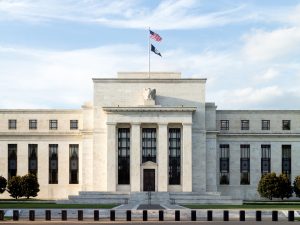
In "Hedge Fund Performance and Regulation," Ziad K Abdelnour discusses the complexities of hedge fund management and the impact of regulatory frameworks on performance. The paper analyzes the balance between necessary regulation to ensure market stability and excessive oversight that could stifle innovation. Abdelnour advocates for regulatory reforms that align with the dynamic nature of hedge funds, encouraging transparency and risk management without undermining the funds' ability to achieve high returns. The document calls for a collaborative approach between regulators and financial professionals to craft regulations that support both investor protection and market growth.

The hedge fund industry has taken quite a hit over the past year, leaving institutional investors fairly disappointed with ROI expectations. Preqin, the industry’s leading investment analytics company cited its 2015’s aggregate 2.02% return as the worst since 2011. Preqin further reported that 44% of fund managers reported failure to meet return objectives. The hedge fund industry is no lightweight; globally the industry accounts for over USD3 trillion assets under management. Poor hedge fund performance is a strong indicator of how unstable the overall financial system has become, even though the industry is not considered a market maker. Both large and boutique hedge funds that pursued single strategy objectives bore the brunt of poor performance. Hedge funds that focused on equity, macroeconomic, managed futures and relative value strategies had the most fund closures for last quarter 2015. Funds with multi-strategy, event-driven strategies and credit strategies had the best overall performance, and a larger number of fund launches. On a positive note, the entire industry saw an increased transfer of capital flows from family offices and high-net-worth individuals in 2015. Evidently, private wealth investors have waning confidence in public capital markets.

While performance and handling market volatility are key drivers for the overall 2016 hedge fund outlook, Preqin cites the number one concern among hedge fund managers to be transparency and risk management, with the need to adapt to new regulations. Hedge funds face conflicting tasks of handling increased costs of improved business infrastructure, while remaining cost competitive with investor fees, in the face of industry regulation. In October 2015 the Securities and Exchange Commission (SEC) found via spot checks that certain hedge fund managers were breaching fiduciary relationships with investors. Fund managers were found to be personally profiting from trades before executing trading strategies, while shrouding performance numbers in performance reports. The SEC has promised further compliance enforcement for private equity and alternative investment firms in 2016, and now mandates hedge funds to provide strict standard data upon registration with the SEC. All private equity funds and investment advisers must file Form ADV to provide fund size and organization structure with the SEC. Funds with at least USD150 million assets under management (AUM) must file an annual Form PF to update leverage, liquidity and investment criteria, and investment fees. The SEC posts all aggregate private equity data derived from reporting publicly, thus satisfying Section 404 of the Dodd-Frank Act’s financial and risk reporting requirements.
Historically, hedge funds needed to meet only Section 4(2) of the Securities Act of 1933 and specifically, the Regulation D safe harbor rules. Hedge funds need to especially adhere to Rule 502, which prohibited general advertising through media and meetings; Rule 505, which exempts offering registration of USD5 million or less, and requires no more than 35 non-accredited investors to be vested in the fund; Rule 506, which allows the hedge fund to offer an unlimited amount of interests to investors. In addition, hedge funds need to file a state-specific “blue sky” filing with the SEC 15 days from the date of an investment into the fund. Under SEC Rule 12(g-1) hedge funds did not have to submit frequent reporting if the fund had less than 500 accredited and non-accredited investors. Hedge funds have been very vigilant in following exemption requirements to avoid over reporting and registration.
Columbia Law School professors Wulf Kaal and Dale Osterle pinpoint why hedge funds have been subjected to further regulation in their blog article, The History of Hedge Fund Regulation in the United States. Long Term Capital Management’s 1998 failure put hedge funds at the forefront of regulation. Prior to LTCM’s bailout by the New York Federal Reserve Bank, hedge funds were not considered as main influencers of systematic risk. However, the SEC began inquiries to regulate transparency and quantify reporting data in the alternative asset management industry. Kaal and Osterle cite the SEC’s failure to achieve all hedge fund registration in 2006’s Goldstein v. SEC case, by which hedge funds were able to deregister and return to the original registration exemptions under the Securities Act of 1933. However, as Kaal and Osterle explain, Title IV of the Dodd-Frank Act finally allowed the SEC to enforce stricture hedge fund regulation, and mandated that the SEC create and enforce rules requiring investment advisors, private equity and asset management firms to complete registration and annual data reporting. Data must include planned strategy disclosure; all risk analytics, credit limits, fund manager positions, and leverage figures must be included as quantifiable metrics.
Fund managers will have a veritable balancing act for the entire fiscal 2016 with continued regulation, and a call for further transparency within the extremely performance driven alternative asset management industry. While hedge funds may not be systematic drivers of the global financial economy in comparison to big banks, the industry’s USD3.2 trillion size is no laughing matter. In addition, sovereign wealth funds are significant players in funding emerging market debt, as we have seen recently with Argentina’s bond debt settlements. While continued regulation is necessary for transparency, fund managers need to have adequate reign in focusing on fund performance, especially in such a volatile macroeconomic system. Fund managers have taken it upon themselves to focus on risk and transparency. Thus, we expect that current data reporting based on Title IV of the Dodd-Frank Act continue with no additional punitive requirements, so as to give hedge funds room for performance improvement in 2016.
REFERENCES
Disclaimer: This article discusses certain companies and their products or services as potential solutions. These mentions are for illustrative purposes only and should not be interpreted as endorsements or investment recommendations. All investment strategies carry inherent risks, and it is imperative that readers conduct their own independent research and seek advice from qualified investment professionals tailored to their specific financial circumstances before making any investment decisions.
The content provided here does not constitute personalized investment advice. Decisions to invest or engage with any securities or financial products mentioned in this article should only be made after consulting with a qualified financial advisor, considering your investment objectives and risk tolerance. The author assumes no responsibility for any financial losses or other consequences resulting directly or indirectly from the use of the content of this article.
As with any financial decision, thorough investigation and caution are advised before making investment decisions.
All Blog Posts
Commodified Lives: Corporate Healthcare Systems Exploit Profit from Human Suffering
What would you do if the people entrusted with your health weren’t healers, but unethical profiteers? And what if your life, your well-being, was just...
CHECKMATE COMMUNISM: The Most Critical Chess Game of Our Lives
Imagine a revolving chessboard where the PAWNS (our individual freedoms) scramble for sure-footing against the onslaught of the KNIGHTS (their economic policies), as directed by...
The Trojan Horse of Artificial Intelligence: A Corrupt Bargain, A Nation’s Betrayal
Welcome, dear reader, to the dazzling spectacle that is the rise of Artificial Intelligence in our beloved United States—the land of the free, or so...
Post Categories